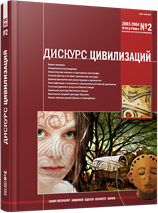Древние «фаянсы» в памятниках эпохи бронзы – начала железа в Восточной Европе (III – первая половина I тыс. до Р.Х.)
Ancient “Faiences” in Bronze Age and Early Iron Age Sites of Eastern Europe (III – first half of the I millennium B.C.). Paradigms of Artifacts
Author(s): Anatoly S. OstroverkhovSubject(s): History, Archaeology, Ancient World
Published by: Издательский дом Stratum, Университет «Высшая антропологическая школа»
Summary/Abstract: The article brings complex characteristics of items made of ancient faience, spread in the eastern European area in 3,000 – 500 B.C. The author infers that faiences enjoyed a sporadic popularity during the studied time period. They were manufactured as imitations of the most popular stones used in jewelry: turquoise, lapis lazuli and haemation. The range of such production was limited, as the items are represented exclusively by decorations and amulets. From the economic point of view, the value of faiences was comparable to the cost of gems, gold and silver. From the chemical and technological points of view, they represent the simplest varieties of Ĺ, F, Ń (by A. Lucas). Such items of that time period come mostly from imports, being brought from the Caucasus, Near East and Egypt. It cannot be excluded that some items of the middle Bronze Age were manufactured in “syncretistic” workshops of the Donets Basin.
Journal: Stratum plus. Археология и культурная антропология
- Issue Year: 2004
- Issue No: 2
- Page Range: 171-203
- Page Count: 33
- Language: Russian
- Content File-PDF

